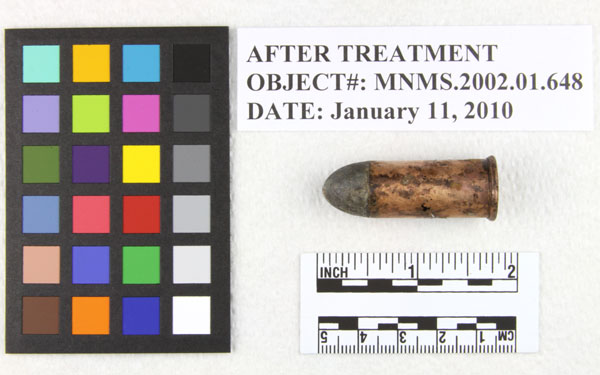In 2006, several complete rimfire cartridges along with fragments were discovered above nutguard 23 embedded within concretion.

The discovery of these cartridges has proved quite exciting for the conservation department, and has caused much discussion over the origins of the ammunition.

In the early 1860’s a wide variety of rimfire cartridges were used with individual types produced for specific weapons. This has lead to speculation that the museum’s cartridges could belong to a Ballard Carbine, Spencer rifle or carbine, or possibly a Sharps and Hankins’ Navy Rifle.

Before treatments on the cartridges were conducted, several non-destructive methods of analysis were employed. X-rays were taken of the complete cartridges to allow conservators insight into the interior conditions of the objects as well as to identify components of the ammunition hidden beneath concreted material. The x-rays also gave clues on construction of the cartridges without having to disassemble the objects. From the x-ray image of one cartridge, it can be seen that the ball has a heel (indent that allows the ball to sit flush with the casing), has a single groove in it, and a measurement of the ball could also be taken.

Unlike today, where cartridge casings are composed of brass (copper and zinc), early metal cartridges were primarily composed of copper. To get an idea of what our casings are composed of, a casing fragment was placed into a Scanning Electron Microscope (SEM), which revealed that the fragment was composed of copper.
